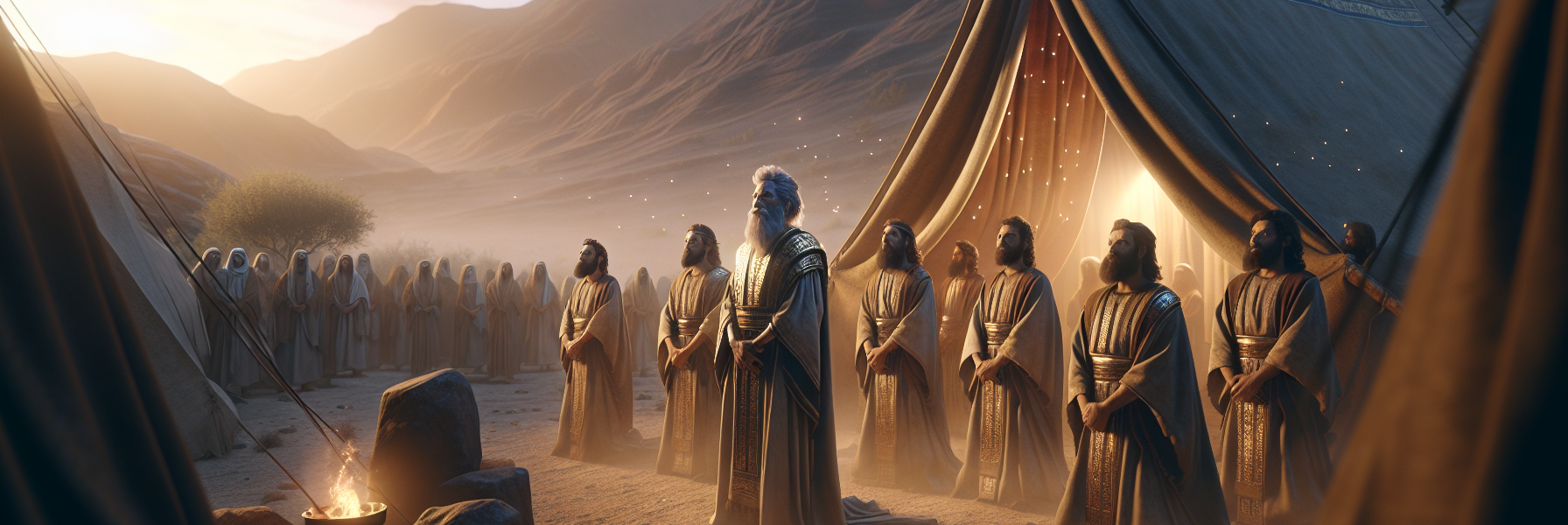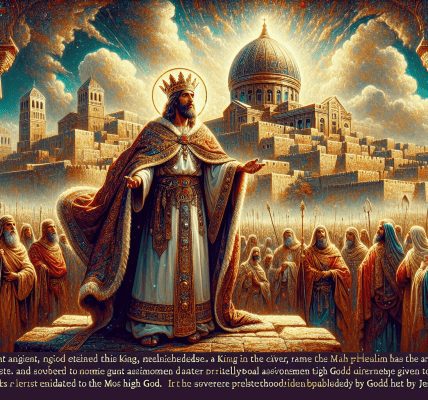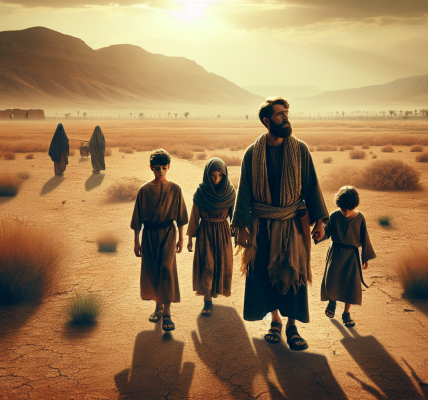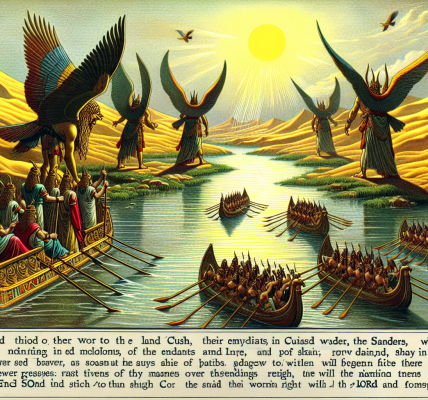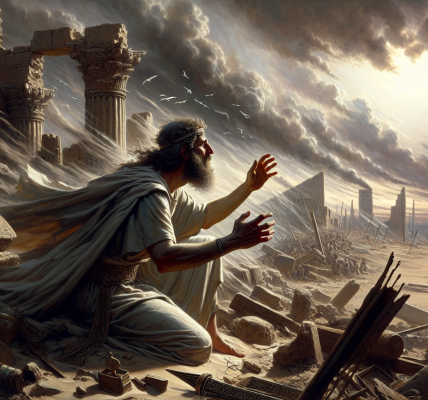**The Consecration of Aaron and His Sons: A Sacred Ordination**
The sun had barely risen over the wilderness of Sinai when the Lord spoke to Moses with solemn instruction. The air was crisp, carrying the faint scent of desert herbs, as the people of Israel stirred in their tents. Today was no ordinary day—it was the day Aaron and his sons would be consecrated as priests before the Lord, set apart for holy service in the newly constructed Tabernacle.
Moses stood before the entrance of the Tent of Meeting, his face radiant from his many encounters with the Almighty. Beside him stood Aaron, his brother, dressed in simple garments, his heart pounding with both reverence and anticipation. Aaron’s sons—Nadab, Abihu, Eleazar, and Ithamar—stood in a line behind him, their young faces reflecting a mixture of awe and solemnity. The weight of their calling pressed upon them, for they were to become mediators between God and His people.
### **The Ritual of Purification**
Moses raised his hands, and the assembly fell silent. “Thus says the Lord,” he declared, his voice carrying across the camp. “Bring forward the bull for the sin offering, the two rams without blemish, and the basket of unleavened bread mixed with oil.” The animals had been carefully selected—strong, unblemished, symbols of purity and surrender.
Aaron and his sons stepped forward, their hands resting upon the head of the bull. The creature stood still, as if sensing the gravity of the moment. Moses placed his hand over theirs, and together they pressed down, transferring the weight of sin onto the innocent beast.
“This bull,” Moses explained, “shall bear your iniquity. Its blood shall purify you before the Lord.” With swift precision, the bull was slain, its lifeblood caught in a basin. Moses dipped his finger into the crimson flow and smeared it upon the horns of the altar, sanctifying it. The rest he poured at the base, a vivid reminder that without the shedding of blood, there could be no forgiveness.
### **The Garments of Glory**
Next, Moses turned to the sacred garments—the ephod, the breastpiece, the robe, the tunic, and the turban—all intricately woven with gold, blue, purple, and scarlet threads. Each piece had been crafted by skilled hands under divine instruction, symbols of the priesthood’s dignity and responsibility.
One by one, Moses clothed Aaron. The linen tunic was tied around him, the robe of blue draped over it, its hem adorned with golden bells and pomegranates. The ephod was fastened with onyx stones engraved with the names of the tribes of Israel, resting upon Aaron’s shoulders as a perpetual reminder of his burden to intercede for the people. The breastpiece, set with twelve precious stones, was secured over his heart—each gem representing a tribe, a constant memorial before the Lord. Finally, the turban was placed upon his head, the golden plate gleaming with the inscription: *Holiness to the Lord*.
Aaron stood transformed, no longer a mere man but now the High Priest of Israel, radiant in his sacred vestments. His sons were likewise clothed in tunics, girded with sashes, their heads adorned with caps. The sight was awe-inspiring, a living picture of God’s holiness bestowed upon frail humanity.
### **The Anointing Oil and the Sacrificial Ram**
Moses took the sacred anointing oil, a fragrant blend of myrrh, cinnamon, and cassia, and poured it liberally over Aaron’s head. The oil cascaded down his beard, onto the collar of his robes, filling the air with its rich perfume. “You are sanctified,” Moses proclaimed, “set apart for the service of the Most High.”
Then came the ram of consecration. Aaron and his sons laid their hands upon it, and as the knife fell, its blood was caught and applied to the right ear, thumb, and big toe of each priest—a sign that every part of their being belonged to God. They were to hear His word, perform His work, and walk in His ways.
Moses took the fat, the liver, the kidneys, and the right thigh of the ram, placing them upon the altar as a wave offering before the Lord. The rest of the ram was boiled in the holy place, and Aaron and his sons partook of its flesh along with the unleavened bread. This sacred meal signified their communion with God, their sustenance drawn from the sacrifices they would offer on behalf of the people.
### **Seven Days of Sanctification**
As the sun began its descent, Moses declared, “For seven days, this ordination shall continue. Each day, a bull shall be offered for atonement, and the altar shall be purified. You shall not leave the entrance of the Tabernacle, for these days you are being made holy.”
And so it was. Morning and evening, the sacrifices were made, the blood applied, the smoke of the offerings rising as a sweet aroma to heaven. The people watched in hushed reverence, understanding that God was establishing a priesthood to bridge the gap between His holiness and their frailty.
### **The Filling of the Hands**
On the eighth day, Aaron lifted his hands for the first time as High Priest, offering sacrifices for himself and the people. Fire blazed from the Lord’s presence, consuming the offering upon the altar, and the people shouted and fell on their faces in worship. The glory of the Lord had confirmed His acceptance.
Thus, Aaron and his sons were consecrated—their hands filled with holy service, their lives devoted to the ministry of the Almighty. And the Lord dwelt among His people, His presence a flame upon the altar, a constant reminder that He had chosen them to be a kingdom of priests, a holy nation.
And so, the sacred duty began—a priesthood that would foreshadow the ultimate High Priest, Jesus Christ, who would one day offer Himself as the perfect sacrifice for all.
